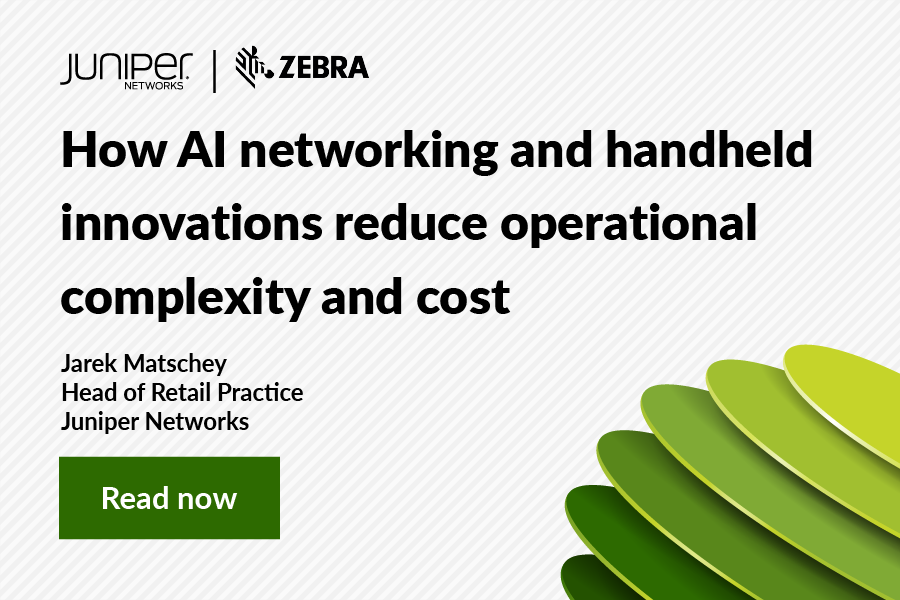Retail Networks Need to be Designed and Built to Deliver Change – Fast.
Everyone in retail knows that change is a constant. From the goods being sold in the stores – or websites – that sell them, over the last two centuries there has been consistent evolution in the way we shop and in the way we bring goods to the consumer market. The introduction of pre-packaged foods, scanning checkouts and electronic payment methods are just three examples of how retail has continuously made advances to meet customer demand, market trends, and increased competitive pressures.
Yet, during retail’s evolution, there have been arguably few revolutionary landmarks, aside from perhaps the advent of leveraging customer data harvested through a loyalty card (which originated with the Tesco Clubcard in the 1990s) and the shift to online and omnichannel retail in more recent years. But even these important innovations have taken time to roll out across the industry before truly being recognized as the norm for retail in the UK.
Now, things really are different.
Over the last 12 months, retail has seen a dramatic acceleration in the pace of change. And for many, this has proved to be a problem. Responding swiftly to rapidly evolving and shifting priorities generated by market conditions, technology advances and customer demand requires an agility that many companies simply do not have within their existing infrastructure.
Success in retail now depends on a network infrastructure that is designed and built to deliver change, while providing an exemplary customer experience every time.
Cloud-Based Microservices are the Solution to Infrastructure Agility
Historically, software used to be created on a monolithic scale. Installation and updates required planning, and often downtime, and there was little or no opportunity to pick and choose individual components beyond selecting a few custom settings.
Today, cloud-based microservice architectures enable companies to move away from those monolithic applications and instead benefit from using applications that are inherently nimble. Microservices are small pieces of software that can be called on to deliver a specific function of an overall service, such as a login facility. Each service has a unique function that communicates with others via a well-defined mechanism and is managed on a modular basis.
Being cloud-based also enables microservices solutions to be scalable, so the number of instances of any service running never needs to be a problem. A microservices architecture also enables new features and bug fixes to happen far more quickly than when using traditional WLAN controllers. Updates can happen every week, for example, and aren’t noticed by the end user – a sharp contrast to the scheduled release cycles of the past.
Mist AI Provides Retailers With The Agility To React To External Factors
Because retailers now require the ability and agility to change at speed and at scale, it’s time to incorporate the need for microservices and cloud-based systems into their IT transformation strategy. Naturally, that also means moving to a microservices and cloud-based network to make this transformation possible.
The Mist AI platform is built on a modern microservices cloud architecture, enabling retailers of all sizes and at all locations to make necessary changes swiftly. For example, updating 25,000 access points serving thousands of devices used to require typing a command line into each access point or updating multiple controllers, which could add up to weeks’ worth of time (not to mention the distinct possibility of human error creeping in). Now, having centrally-managed devices means that changes can be made universally, more accurately, and at speed – perfect for deploying a new promotion into stores or making time-sensitive operational changes.
There’s No Need to Know What’s Coming Next: Just Be Ready to Respond
With an increasing focus on the connected omnichannel customer experience and the stores of the future set to offer more innovative and engaging services, moving to a cloud based-microservices architecture is the strategic choice for retailers. This gives them the agility to keep pace with operational, security, and service requirements – and to move with (or ahead of) the times, through the next normal and beyond.
As revolutions go, it’s quiet, but the impact will be seen everywhere – in shopping malls, retail parks and online.
Learn More About Juniper Solutions for Retailers
See how Mist Wi-Fi has powered innovation for food delivery platform, Wolt


